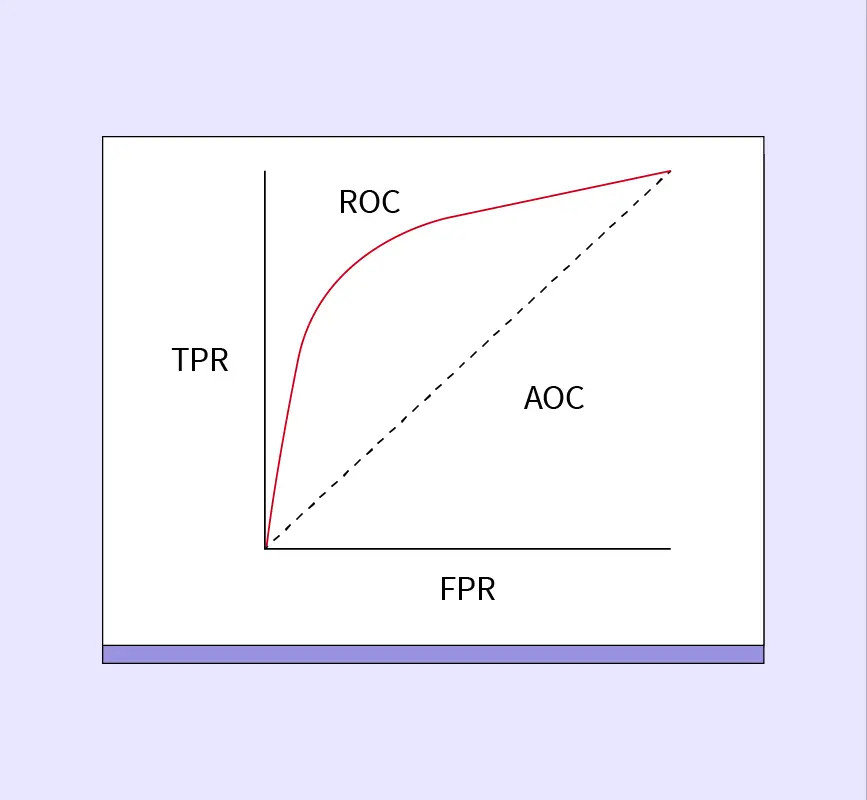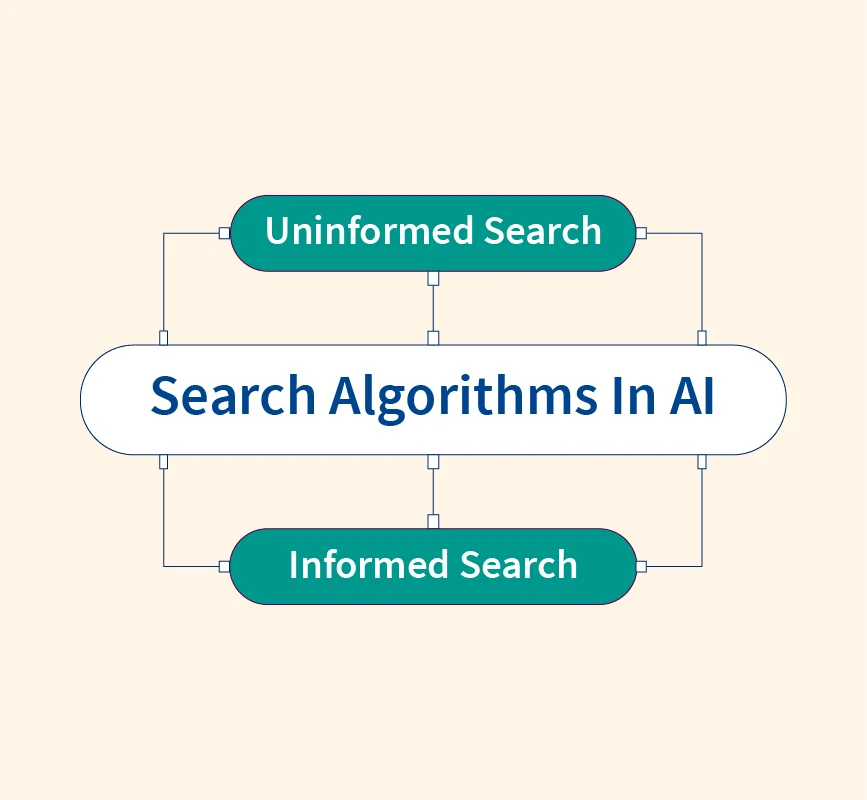Artificial Intelligence (AI) algorithms are the core mechanisms that enable machines to process information, learn patterns, and make decisions without human intervention. These algorithms form the foundation of AI systems, allowing computers to recognize speech, classify images, analyze data, and predict outcomes with accuracy and efficiency.
AI algorithms play a crucial role in automation, problem-solving, and decision-making across industries. They are widely used in business intelligence, healthcare diagnostics, fraud detection, natural language processing (NLP), and robotics. These algorithms process vast amounts of data, enabling AI models to detect hidden trends, correlations, and anomalies that traditional methods might overlook.
There are several categories of AI algorithms, each designed for specific tasks. Supervised learning algorithms rely on labeled data to train models, while unsupervised learning algorithms find patterns without predefined labels. Semi-supervised learning combines both approaches, and reinforcement learning focuses on decision-making through rewards and penalties. Additionally, AI search and optimization algorithms help solve complex computational problems.
What are AI Algorithms?
AI algorithms are sets of instructions that enable machines to learn from data, recognize patterns, and make decisions autonomously. Unlike traditional algorithms, which follow a predefined set of rules, AI algorithms can adapt, improve over time, and handle complex tasks without explicit programming.
One of the key characteristics of AI algorithms is adaptability. They continuously learn from new data and adjust their predictions or decisions accordingly. AI models also excel at pattern recognition, allowing them to detect trends, anomalies, and correlations within massive datasets. Another essential characteristic is self-improvement—AI algorithms optimize themselves through processes like reinforcement learning and gradient descent, refining accuracy with each iteration.
The primary difference between AI algorithms and traditional programming algorithms lies in their functionality. Traditional algorithms operate on fixed rule-based logic, meaning they perform the same action every time based on explicit instructions. In contrast, AI algorithms use statistical models and probabilistic reasoning to make dynamic, data-driven decisions. This enables AI to handle uncertainty, variability, and complex problem-solving in ways traditional algorithms cannot.
How Do AI Algorithms Work?
AI algorithms operate through a structured process involving data input, processing, learning, and output. The process begins with data collection, where raw information is gathered from various sources such as images, text, or sensor readings. The data is then preprocessed and structured, allowing AI models to recognize patterns and extract meaningful insights.
The learning phase is critical, as AI algorithms train on historical data to make predictions or classifications. During this phase, supervised learning models use labeled datasets, while unsupervised learning models identify patterns without predefined labels. Reinforcement learning algorithms learn through trial and error, improving performance based on rewards and penalties.
Feedback loops play a crucial role in refining AI models. AI algorithms continuously improve by analyzing errors, adjusting parameters, and retraining on new data. This self-optimization process enhances accuracy, efficiency, and adaptability over time.
Examples of AI algorithms in action include spam filters that classify emails, fraud detection systems that identify suspicious transactions, and self-driving cars that analyze traffic patterns in real-time. Chatbots and virtual assistants like Siri and Alexa use AI algorithms to process natural language and provide relevant responses.
Types of AI Algorithms
AI algorithms are broadly categorized into Supervised Learning, Unsupervised Learning, Semi-Supervised Learning, and Reinforcement Learning. Each type has specific use cases and methodologies that help machines learn, analyze, and make decisions effectively.
1. Supervised Learning Algorithms
Supervised learning algorithms learn from labeled datasets, meaning the input data comes with corresponding correct outputs. The model continuously refines itself based on feedback to improve accuracy. These algorithms are widely used in spam detection, medical diagnosis, fraud detection, and stock price predictions.
Classification and Regression
- Classification categorizes data into specific classes (e.g., spam or non-spam emails).
- Regression predicts continuous values, such as house prices or sales forecasts.
Decision Tree
A decision tree is a hierarchical model that splits data into branches based on feature values. Each internal node represents a decision, and the leaf nodes indicate outcomes.
- Use Case: Customer churn prediction, credit risk assessment.
Random Forest
Random Forest is an ensemble learning algorithm that combines multiple decision trees to improve accuracy and reduce overfitting.
- Use Case: Fraud detection, medical diagnosis, stock market analysis.
Support Vector Machines (SVM)
SVM classifies data by finding the optimal hyperplane that separates different categories in a high-dimensional space.
- Use Case: Image recognition, sentiment analysis, handwriting recognition.
Naïve Bayes
Naïve Bayes is a probabilistic classifier based on Bayes’ theorem. It assumes independence between features, making it highly efficient for classification tasks.
- Use Case: Email spam filtering, sentiment analysis, document categorization.
Linear Regression
Linear regression predicts a numerical value based on a linear relationship between input variables. It is commonly used for forecasting.
- Use Case: Sales forecasting, weather prediction, housing price estimation.
Logistic Regression
Logistic regression is used for binary classification problems by estimating the probability of an event occurring.
- Use Case: Disease prediction, loan default classification.
2. Unsupervised Learning Algorithms
Unsupervised learning algorithms work with unlabeled data, meaning the model identifies patterns without predefined categories. These algorithms are used in customer segmentation, anomaly detection, and recommendation systems.
Clustering
Clustering techniques group similar data points together, allowing machines to recognize patterns in large datasets.
K-means Clustering
K-means clustering assigns data points to K different clusters based on similarity. It iteratively updates cluster centroids to refine the grouping.
- Use Case: Customer segmentation, social network analysis.
Gaussian Mixture Model (GMM)
GMM is a probabilistic clustering technique that assumes data points belong to multiple distributions. It is more flexible than K-means.
- Use Case: Image segmentation, speech recognition.
3. Semi-Supervised Learning Algorithms
Semi-supervised learning combines both supervised and unsupervised learning by using a small amount of labeled data along with a large set of unlabeled data. It is useful in cases where labeling data is expensive or time-consuming.
K-Nearest Neighbors (KNN)
KNN is a simple algorithm that classifies new data points based on their similarity to labeled examples.
- Use Case: Recommender systems, image classification.
Neural Networks
Neural networks mimic the human brain and consist of layers of interconnected nodes that process data and learn from large datasets.
- Use Case: Facial recognition, speech-to-text conversion, medical diagnosis.
4. Reinforcement Learning Algorithms
Reinforcement learning (RL) algorithms learn by interacting with an environment and receiving rewards or penalties based on actions. They are widely used in robotics, game-playing AI, and autonomous driving.
Model-Based Learning
Model-based learning creates an internal model of the environment and uses it for decision-making.
- Use Case: Self-driving cars, robotic control systems.
Policy-Based Learning
Policy-based learning directly maps states to actions, optimizing decision-making strategies through rewards.
- Use Case: Game-playing AI (e.g., AlphaGo), robotic movements.
Value-Based Learning
Value-based learning algorithms, such as Q-learning, evaluate the best long-term strategy by estimating the expected rewards of actions.
- Use Case: Chess-playing AI, dynamic pricing optimization.
AI Algorithms in Specific Domains
AI algorithms are designed to solve complex problems across various domains, including search optimization, computer vision, and natural language processing (NLP). These specialized algorithms enhance automation, improve accuracy, and drive advancements in AI applications.
AI Search and Optimization Algorithms
Search and optimization algorithms help AI find solutions to problems efficiently by navigating large datasets and computational spaces.
- Uninformed Search Techniques: These algorithms explore the problem space without prior knowledge. Examples include Breadth-First Search (BFS) and Depth-First Search (DFS), used in graph traversal and pathfinding.
- Informed Search Techniques: These methods use heuristics to improve efficiency. A Search Algorithm* and Greedy Best-First Search are commonly used in AI planning and routing problems.
- Adversarial Search: Used in AI game-playing, adversarial search involves Minimax and Alpha-Beta Pruning, where AI makes decisions by simulating possible opponent moves.
- Constraint Satisfaction Problems (CSP): AI applies backtracking, forward checking, and constraint propagation in areas like scheduling, resource allocation, and puzzle-solving.
AI Algorithms for Computer Vision
Computer vision AI enables machines to interpret and analyze visual information from images and videos. These algorithms power applications in autonomous vehicles, security surveillance, and medical imaging.
- Object Detection: Algorithms like YOLO (You Only Look Once), Faster R-CNN, and SSD (Single Shot MultiBox Detector) identify and locate objects within images.
- Facial Recognition: AI models such as FaceNet and DeepFace extract facial features to recognize individuals. This technology is widely used in biometric authentication and surveillance.
- Image Segmentation: Algorithms like U-Net and Mask R-CNN classify individual pixels in images, essential for medical imaging, autonomous driving, and satellite image processing.
AI Algorithms for Natural Language Processing (NLP)
NLP algorithms allow machines to understand, generate, and process human language. These AI techniques power chatbots, translation tools, sentiment analysis, and text summarization.
- Transformer-Based Models: BERT (Bidirectional Encoder Representations from Transformers) and GPT (Generative Pre-trained Transformer) revolutionized NLP by enabling AI to generate and comprehend human-like text.
- Sentiment Analysis: Algorithms like LSTM (Long Short-Term Memory) networks and Naïve Bayes classifiers analyze text to determine emotional tone, used in social media monitoring and customer feedback analysis.
- Text Summarization: AI models such as T5 (Text-to-Text Transfer Transformer) and BART (Bidirectional and Auto-Regressive Transformer) condense large documents into concise summaries, aiding in news aggregation and research analysis.
Use Cases and Applications of AI Algorithms
AI algorithms have transformed various industries by enabling automation, predictive analytics, and intelligent decision-making. Below are some of the most impactful applications of AI across different domains.
AI in Business and Industry
AI-driven automation is revolutionizing businesses by optimizing workflows, enhancing efficiency, and reducing operational costs. AI algorithms power:
- Recommendation systems in e-commerce (e.g., Amazon, Netflix) that suggest products or content based on user preferences.
- Predictive analytics for supply chain management and demand forecasting.
- Process automation in customer service through AI-powered chatbots and virtual assistants.
AI in Healthcare
AI is improving healthcare by enabling faster diagnostics, drug discovery, and personalized treatment plans. Key applications include:
- Medical diagnosis: Deep learning models like CNNs (Convolutional Neural Networks) analyze medical images (e.g., MRI scans, X-rays) to detect diseases such as cancer.
- Drug discovery: AI accelerates pharmaceutical research by predicting molecular interactions and optimizing clinical trials.
- Predictive analytics: Machine learning models forecast disease outbreaks, patient deterioration, and treatment outcomes.
AI in Finance
Financial institutions leverage AI algorithms for fraud prevention, investment strategies, and credit risk assessment. Examples include:
- Fraud detection: Machine learning models identify anomalies in transaction data to flag fraudulent activities.
- Stock market prediction: AI-powered trading algorithms analyze market trends and execute high-frequency trades.
- Risk assessment: AI evaluates customer profiles for loan approvals and credit scoring.
AI in Autonomous Systems
AI is at the core of self-driving cars, robotics, and IoT-enabled smart devices. Major applications include:
- Autonomous vehicles: AI algorithms process sensor data for real-time navigation and obstacle detection.
- Robotics: AI-driven robots assist in manufacturing, warehouse automation, and precision surgery.
- IoT applications: AI enhances smart home devices, industrial automation, and real-time monitoring systems.
From enhancing efficiency in businesses to improving patient care and driving automation, AI algorithms are shaping the future of multiple industries.
Challenges and Future Trends in AI Algorithms
- AI algorithms have become powerful tools for decision-making, but they also raise significant ethical concerns. Many AI systems function as black-box models, meaning their internal decision-making processes are not easily interpretable. This lack of transparency can lead to unjust or biased outcomes, particularly in fields like healthcare, hiring, and law enforcement. Ensuring ethical AI decision-making requires the development of explainable AI (XAI), transparent model architectures, and human oversight to make AI-driven decisions more accountable and understandable.
- Bias and fairness in AI models remain critical challenges. AI systems learn from historical data, and if that data contains biases, the models can amplify societal inequalities. Instances of biased facial recognition, discriminatory hiring algorithms, and unfair credit assessments highlight the risks of unchecked AI bias. To promote fairness, organizations must adopt bias detection frameworks, diverse training datasets, and regulatory guidelines to minimize discriminatory patterns and improve inclusivity in AI applications.
The future of AI algorithms is expected to be shaped by quantum computing and hybrid AI techniques. Quantum computing has the potential to enhance AI training speeds, optimize complex simulations, and improve encryption security. Hybrid AI, which integrates machine learning with symbolic reasoning and neuromorphic computing, aims to enhance AI’s ability to generalize, interpret abstract concepts, and improve problem-solving capabilities. As AI continues to evolve, leveraging these advancements will be key to developing more efficient, interpretable, and responsible AI systems.
Conclusion
AI algorithms are the driving force behind modern artificial intelligence, enabling machines to learn from data, recognize patterns, and make intelligent decisions. From supervised and unsupervised learning to reinforcement learning and optimization techniques, AI algorithms power automation, predictive analytics, and decision-making across multiple domains. Their applications span industries such as healthcare, finance, business intelligence, autonomous systems, and natural language processing, revolutionizing how organizations operate.
As AI continues to advance, its impact on industries will only grow. Businesses are leveraging AI for process optimization, fraud detection, and recommendation systems, while healthcare benefits from AI-driven diagnostics, drug discovery, and personalized medicine. In finance, AI enhances risk assessment and algorithmic trading, while in robotics and self-driving technology, AI improves autonomous decision-making.
References:


